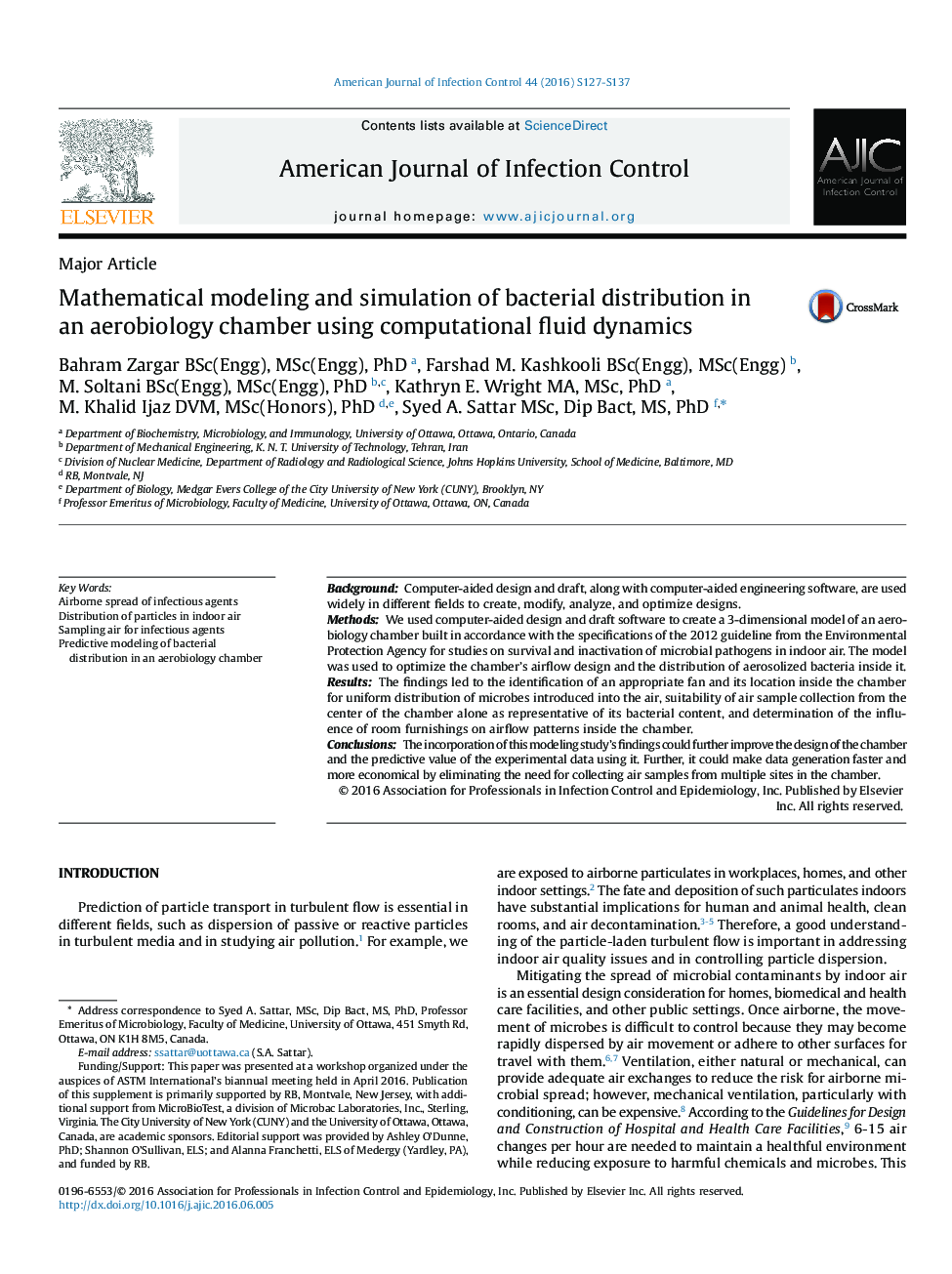| Article ID | Journal | Published Year | Pages | File Type |
|---|---|---|---|---|
| 2636666 | American Journal of Infection Control | 2016 | 11 Pages |
•Identified an appropriate fan, its speed, angle and location inside the chamber for uniform distribution of microbes introduced into the air.•Validated the suitability of air sample collection from the center of the chamber alone as representative of the chambers bacterial content.•Determined the impact of room furnishings on airflow patterns inside the chamber.
BackgroundComputer-aided design and draft, along with computer-aided engineering software, are used widely in different fields to create, modify, analyze, and optimize designs.MethodsWe used computer-aided design and draft software to create a 3-dimensional model of an aerobiology chamber built in accordance with the specifications of the 2012 guideline from the Environmental Protection Agency for studies on survival and inactivation of microbial pathogens in indoor air. The model was used to optimize the chamber's airflow design and the distribution of aerosolized bacteria inside it.ResultsThe findings led to the identification of an appropriate fan and its location inside the chamber for uniform distribution of microbes introduced into the air, suitability of air sample collection from the center of the chamber alone as representative of its bacterial content, and determination of the influence of room furnishings on airflow patterns inside the chamber.ConclusionsThe incorporation of this modeling study's findings could further improve the design of the chamber and the predictive value of the experimental data using it. Further, it could make data generation faster and more economical by eliminating the need for collecting air samples from multiple sites in the chamber.
